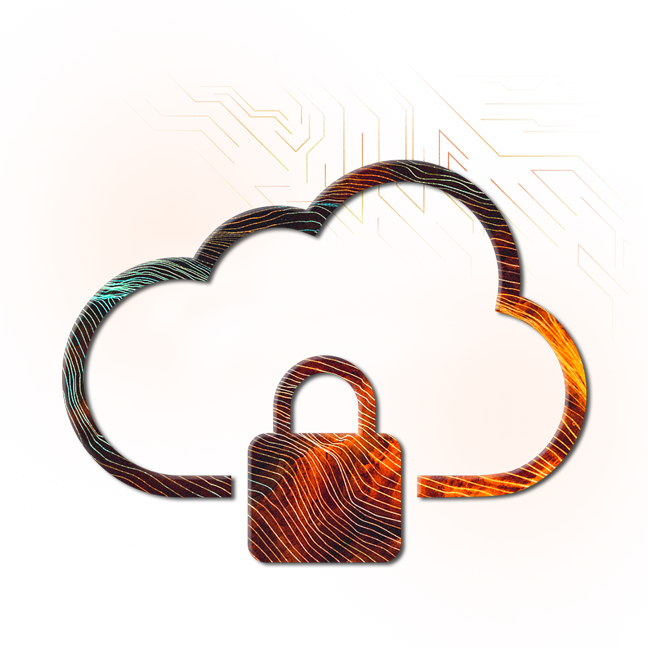- Home
- Services
- Professional Services
- Cloud Security Assessment
Cloud Security Assessment
Safeguard your cloud infrastructure with a thorough test of your security controls with a cloud security assessment from CyberOne.

Test the Effectiveness of Your AWS, Google Cloud or Microsoft Azure Security Controls
In today’s business environment, many companies are using cloud-based systems to house critical operational data. The assumption that cloud servers and services are impenetrable because they are provided by tech giants is wrong. Not only do you need to ensure you have a secure business continuity model, but you also need to understand that the safety and protection of your data is also your responsibility.
The remote nature of cloud systems can leave you vulnerable to hostile attacks, making a cloud security assessment essential to identify any security flaws. We assess the security of cloud infrastructure and applications hosted by cloud service providers such as Amazon Web Services, Google Cloud, or Microsoft Azure. Our testing gauges the effectiveness of your security controls. We identify, safely exploit and help to remediate vulnerabilities before malicious adversaries compromise them.

Our Accreditations Speak For Themselves
Trusted By Leading UK & Global Businesses
At CyberOne we look after our clients – a team of authentic people who know their stuff and where no egos are allowed. We challenge our clients collaboratively, always improving, executing 100% – and they respect us for it.










Get in Touch
Learn more about how CyberOne Cloud Security Assessments can protect your business.
Frequently Asked Questions
What Is a Cloud Security Assessment?
A cloud security assessment is an evaluation of the security controls, policies and risks associated with a cloud-based system. By conducting a cloud security assessment, organisations can identify vulnerabilities and receive actionable recommendations to enhance the overall security of their cloud environment.
How Often Should I Conduct a Cloud Security Assessment?
The frequency of your cloud security assessments depends on several factors, including the nature of your business, the sensitivity of your data and any regulatory requirements that you need to adhere to.
However, it is generally recommended to conduct cloud security assessments at least once a year or whenever significant changes are made to your cloud infrastructure. Additionally, regular monitoring and testing of your cloud security controls should be done to ensure that they protect against new threats and vulnerabilities.
How Long Does a Cloud Security Assessment Take?
Typically, a comprehensive cloud security assessment can take anywhere from a few weeks to several months.
The process involves identifying and analysing potential vulnerabilities in the cloud environment, evaluating security controls and policies, conducting Penetration Testing and ensuring compliance with relevant regulations and standards.
It is essential to allocate sufficient time to thoroughly assess and address any security risks, ensuring the protection of data and infrastructure in the cloud.
What Are Some Common Challenges in Cloud Security Assessments?
Some common challenges in cloud security assessments include:
- Data privacy and protection
- Ensuring compliance with regulations and standards
- Securing the cloud infrastructure and platforms
- Managing access controls and permissions
- Detecting and responding to security incidents
- Staying updated with the constantly evolving threat landscape.
What Is Most Important for Cloud Security?
To prepare for a cloud security assessment:
- Review and align cloud architecture with security policies.
- Identify critical assets and implement proper access controls.
- Enable multifactor authentication (MFA) for user accounts.
- Implement monitoring, logging and vulnerability scanning.
- Have a clear incident response plan in place.
How Can I Prepare for a Cloud Security Assessment?
To prepare for a cloud security assessment:
- Review and align cloud architecture with security policies.
- Identify critical assets and implement proper access controls.
- Enable multifactor authentication (MFA) for user accounts.
- Implement monitoring, logging and vulnerability scanning.
- Have a clear incident response plan in place.
Frequently Asked Questions
What Is a Cloud Security Assessment?
A cloud security assessment is an evaluation of the security controls, policies and risks associated with a cloud-based system. By conducting a cloud security assessment, organisations can identify vulnerabilities and receive actionable recommendations to enhance the overall security of their cloud environment.
How Often Should I Conduct a Cloud Security Assessment?
The frequency of your cloud security assessments depends on several factors, including the nature of your business, the sensitivity of your data and any regulatory requirements that you need to adhere to.
However, it is generally recommended to conduct cloud security assessments at least once a year or whenever significant changes are made to your cloud infrastructure. Additionally, regular monitoring and testing of your cloud security controls should be done to ensure that they protect against new threats and vulnerabilities.
How Long Does a Cloud Security Assessment Take?
Typically, a comprehensive cloud security assessment can take anywhere from a few weeks to several months.
The process involves identifying and analysing potential vulnerabilities in the cloud environment, evaluating security controls and policies, conducting Penetration Testing and ensuring compliance with relevant regulations and standards.
It is essential to allocate sufficient time to thoroughly assess and address any security risks, ensuring the protection of data and infrastructure in the cloud.
What Are Some Common Challenges in Cloud Security Assessments?
Some common challenges in cloud security assessments include:
- Data privacy and protection
- Ensuring compliance with regulations and standards
- Securing the cloud infrastructure and platforms
- Managing access controls and permissions
- Detecting and responding to security incidents
- Staying updated with the constantly evolving threat landscape.
What Is Most Important for Cloud Security?
To prepare for a cloud security assessment:
- Review and align cloud architecture with security policies.
- Identify critical assets and implement proper access controls.
- Enable multifactor authentication (MFA) for user accounts.
- Implement monitoring, logging and vulnerability scanning.
- Have a clear incident response plan in place.
How Can I Prepare for a Cloud Security Assessment?
To prepare for a cloud security assessment:
- Review and align cloud architecture with security policies.
- Identify critical assets and implement proper access controls.
- Enable multifactor authentication (MFA) for user accounts.
- Implement monitoring, logging and vulnerability scanning.
- Have a clear incident response plan in place.

